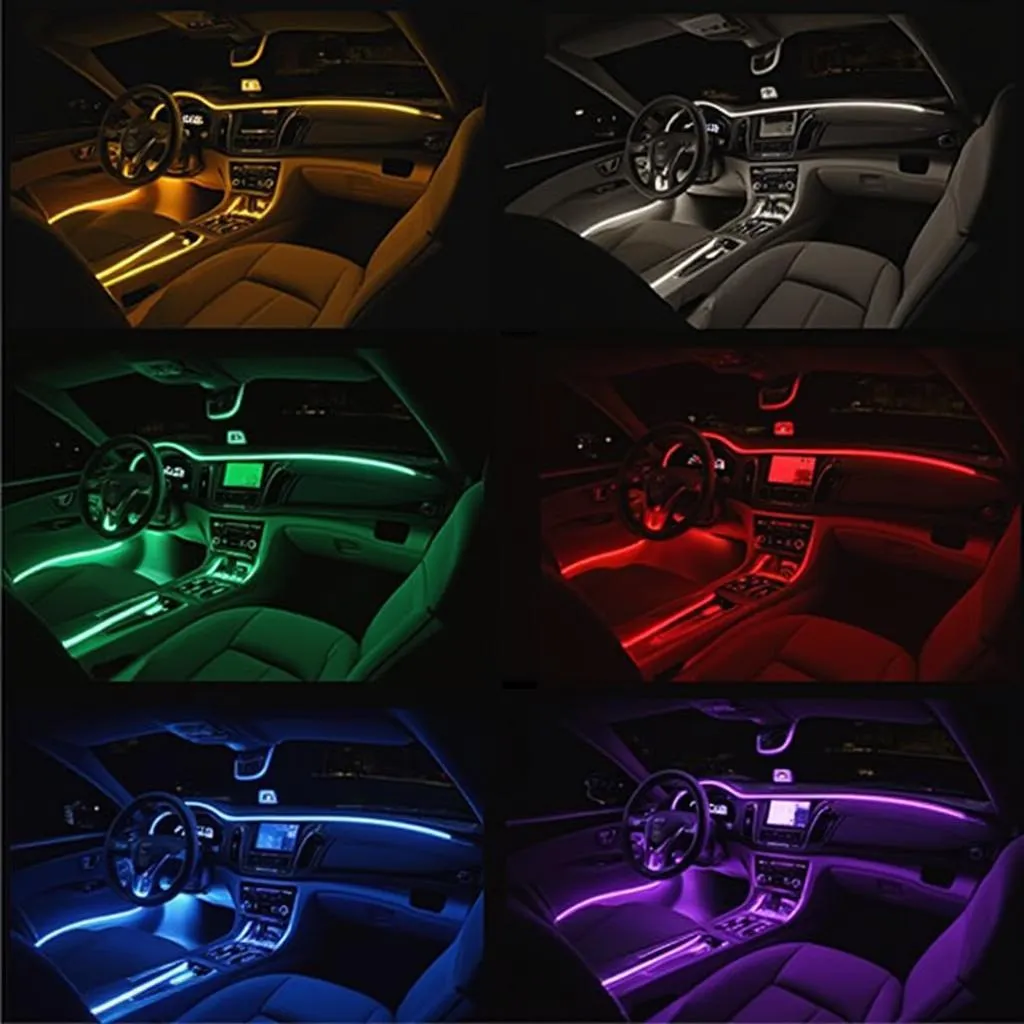You’re cruising down the road, blasting your favorite tunes, and suddenly you spot a car with vibrant blue lights illuminating the interior. It’s cool, right? But hold on a second – is it even legal to have colored lights inside your car? This question often pops up, and the answer isn’t always straightforward. It’s a blend of laws, safety, and a touch of aesthetics.
Understanding the Laws: A Murky Area
The short answer is: it depends. There’s no universal law across all states in the US that explicitly bans colored interior lights in vehicles. However, things get a little tricky when you delve into specific regulations.
State Laws and Regulations:
- The Focus is on Safety: Most states primarily focus on exterior lighting, aiming to ensure proper visibility and signaling on the road. Laws governing interior lighting are often vague or absent.
- Ambiguity is Key: Some states might have general laws about “unnecessary lights” or those that could “distract” other drivers. This is where interpretation comes in, and it can be subjective.
- Safety is Paramount: The primary concern is preventing drivers from being distracted by excessive interior lights or those that could blind other drivers on the road.
What About Blue Lights?
- Blue Lights Can Be Tricky: Blue lights are often associated with emergency vehicles, and using them inappropriately could lead to confusion and potentially dangerous situations.
- State-Specific Laws: Some states might have laws specifically banning the use of blue lights unless they’re for official emergency purposes.
- Best Practice: Avoid blue lights unless you’re a first responder or authorized to use them.
It’s Not Just the Law:
While laws are a crucial factor, there’s a lot more to consider than just legal implications:
Common Sense and Safety:
- Distraction is Dangerous: Excessive or bright interior lights can distract drivers, impacting their focus on the road. This is a significant safety hazard.
- Visual Interference: Lights that are too bright or strategically placed could potentially blind or disorient other drivers, leading to accidents.
- Maintaining Visibility: While interior lights are for aesthetics, they should never compromise the driver’s ability to see the road clearly.
Aesthetics:
- Personal Style: Interior lights can enhance your car’s style and create a personalized experience.
- Moderation is Key: Choose colors and brightness levels that are visually appealing but also safe for both you and other drivers.
What Does the Expert Say?
“It’s crucial to prioritize safety over everything else when it comes to interior lights,” says David Thompson, a leading automotive expert. “While some states have vague laws, it’s always best to use common sense and ensure your lighting choices aren’t hindering your visibility or distracting other drivers.”
Tips for Safe and Stylish Interior Lighting:
- Dim It Down: Choose lights with adjustable brightness so you can customize the intensity without being too bright.
- Focus on the Driver’s Side: Avoid installing lights that could potentially blind drivers in oncoming lanes.
- White or Warm White: Stick to white or warm white lights as they are less distracting and generally more acceptable.
- Consider Alternatives: There are many stylish and effective interior lighting options that don’t involve colored lights, like LED strips.
FAQ
- Are interior lights mandatory? No, interior lights are not mandatory in most states.
- What about underglow lighting? Underglow lighting is generally illegal, as it can blind oncoming drivers.
- Can I use colored lights for my car’s dashboard? Some states might have laws regulating dashboard lights, so it’s best to consult with local authorities.
- Can I use colored lights in my car if I’m parked? While it’s less likely to cause safety issues, it’s still recommended to be mindful of any potential distractions or legal restrictions.
Conclusion
While laws regarding interior lighting are often unclear, prioritizing safety and common sense is essential. Remember, the goal is to create a visually appealing and comfortable interior without endangering yourself or others on the road. If you’re unsure about your local regulations, it’s best to consult with your local authorities or an automotive expert.
 Colored Car Interior Lights: Legal, Safety and Styles
Colored Car Interior Lights: Legal, Safety and Styles
When in doubt, choose moderation and prioritize the safety of everyone on the road. After all, driving should be an enjoyable experience for everyone!